With Ben’s work complete in Delhi, we are ready to pursue an eight year old dream of coming back to Rajasthan.
There are times when we have travelled in the past to a far away place, a moment, a time so magical that we both say, “imagine if we could come back here one day.”
Of course, one never knows whether coming back to a place that has held magic, will feel the same upon return. Places change. What was novel and magical once cannot be guaranteed to remain that way.
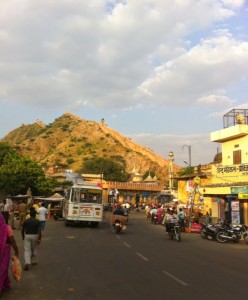 |
| On entering Rajahastan, after a long drive from Delhi, we enter a market town bustling with locals preparing for the festival of Diwali. |
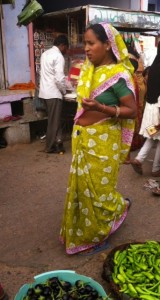 |
| The beauty of India is in its women and their brightly coloured jewel tone saris. Always brightening a street, a market, a landscape with their presence. |
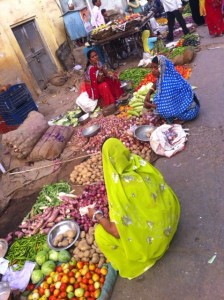 |
| Bright lime sari matching the greens and yellows of the produce for sale on the streets. |
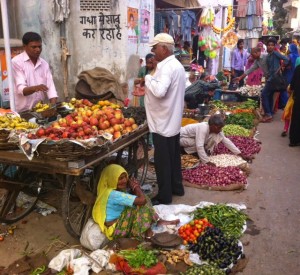 |
| Fresh produce lines the streets on the ground and in carts. |
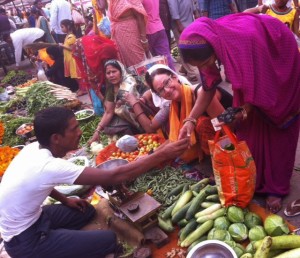 |
| Everything is so fresh and amazing looking. We buy supplies for a picnic salad bounty in our hotel room for dinner. |
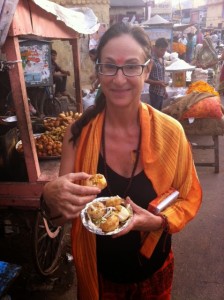 |
| Can’t pass up a bite of Puri my fave Indian street food. |
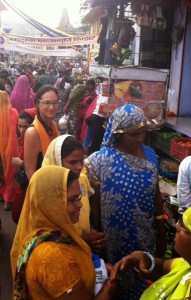 |
| There is an air of excitement before Diwali festival of lights begins. The streets are full of life and energy and vibrant colors. The intensity of the market place in the region of Rajahastan is unsurpassed! |
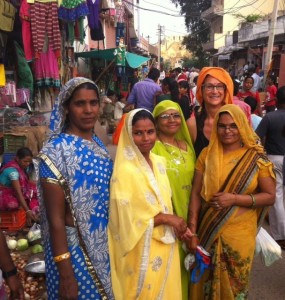 |
| The colorful and bright saris create quite a palette! |
Arriving in Jaipur, Capital of Rajasthan after hours on the road, one immediately notices all the pink walls which surround the walled internal city. Hence the name of “The Pink City.”
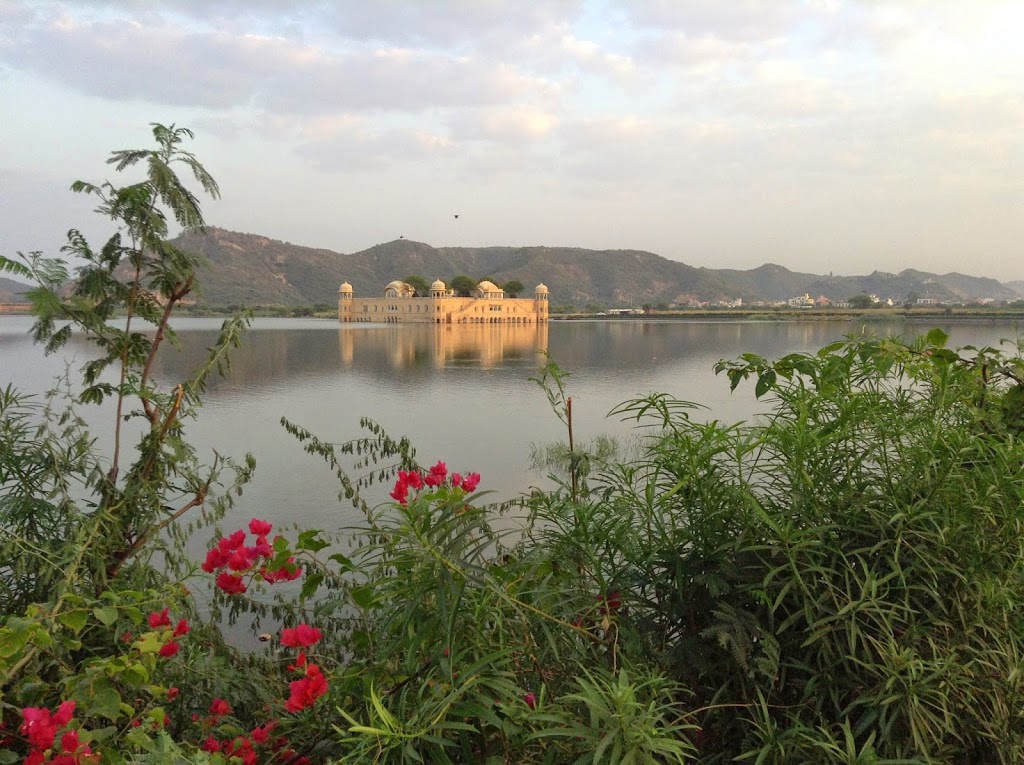 |
| The lovely Pink Palace, in Jaipur (the pink city) in Rajasthan. |
 |
| Outside the Jaipur gates. |
 |
| Detail of one of the four gates of the walled city of Jaipur. |
 |
| Rajasthani women are particularly proud and brightly dressed. |
 |
| We try to fit in where we go and adjust our dress accordingly. Shoulders and head are routinely kept covered in public. |
 |
| Old wooden printing blocks in front of the Wind Palace. The palace was built for court women to be able to watch ongoings in the street from above, without being seen themselves. |
 |
| Baby eggplants for sale outside the city gates. |
We leave Jaipur, the Pink City, Capital of Rajasthan and drive toward our final destination of the sacred city of Pushkar, on the edge of the desert. Ben in particular has always wanted to attend the annual, largest camel trading fair and festival in Asia.
The scenery changes abruptly to a Rajasthani landscape indicating that we are entering desert-like conditions. The animals are a first clue ~ large, powerful goats are now the prevalent animal. And the dress of course, changes as well. Rajasthani men and women wear their heritage proudly.
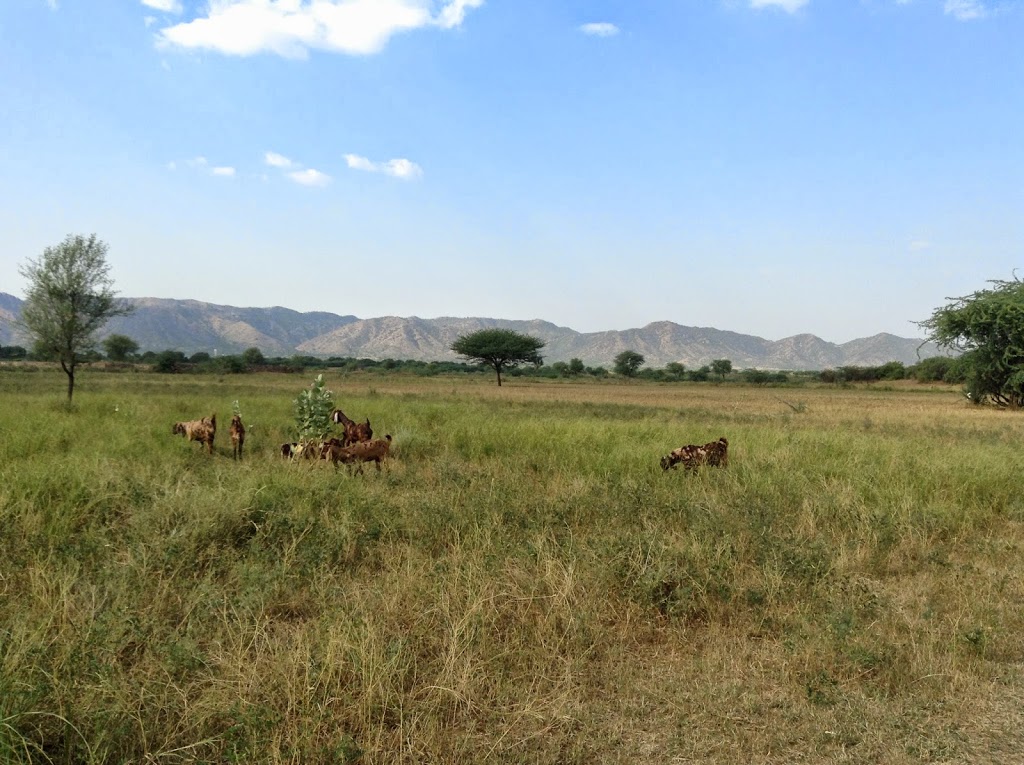 |
| Fields with goats grazing… Mountain range behind. |
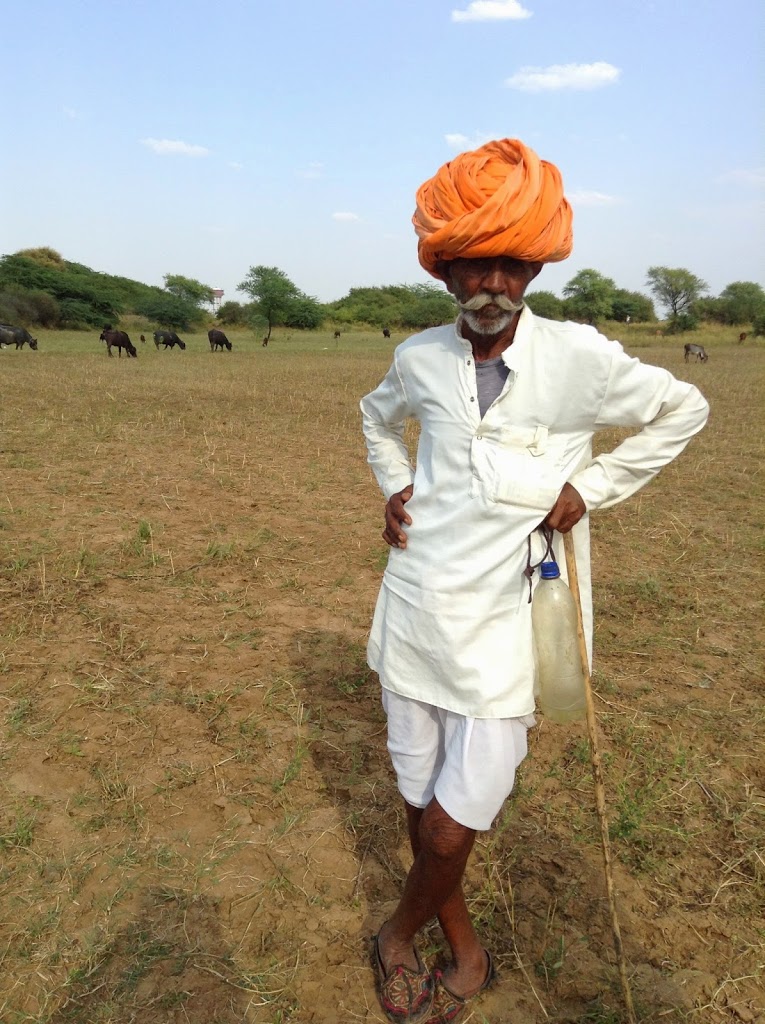 |
| A proud Rajasthan goat herder. |
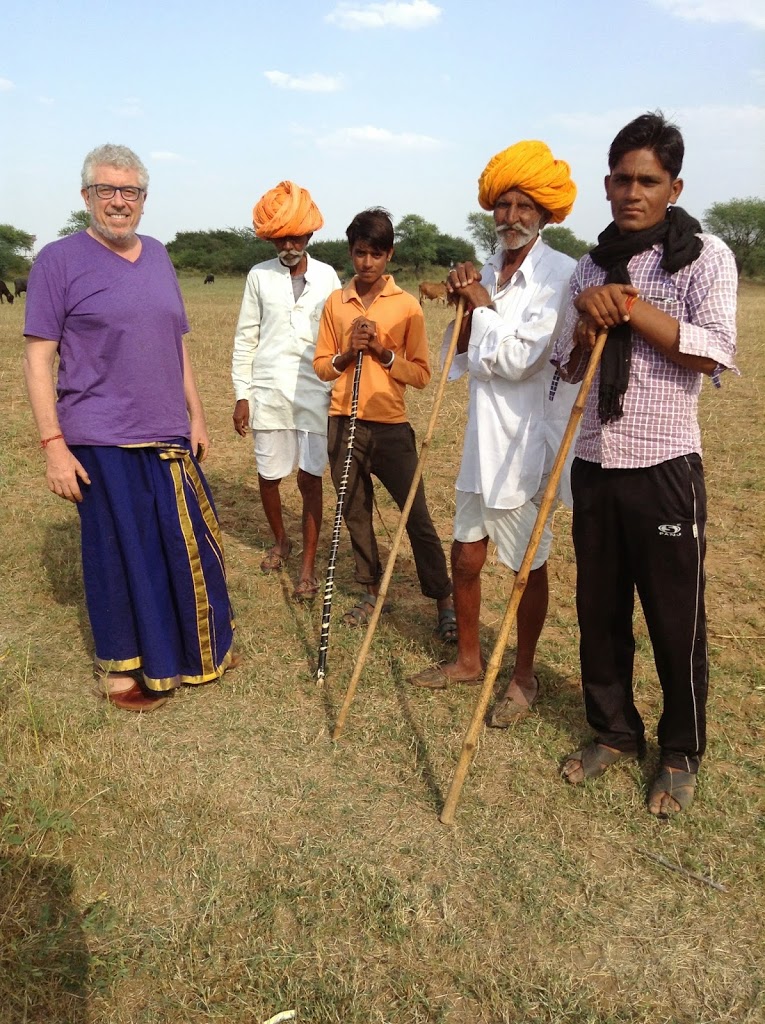 |
| Ben wearing his Southern Indian traditional wear for men. Is the orange turban next? |
We have travelled the world a fair amount and in terms of exoticism, we can’t think of another place that is quite so dramatically exotic. The architecture is magnificent and much of it is still in its original state. The variety of characters that one meets almost seem like they could be out of a Hollywood or Bollywood set. But this is the real thing! We feel privileged to be able to experience the time warp that Pushkar offers.
 |
| Outside one of the many many temples in the city of Pushkar. |
 |
| The architecture has not been restored and or maintained in many places, and such is the beauty of Pushkar. |
 |
| Through the gates to this HIndu only temple, one can see the large and highly sculpted stone tower. |
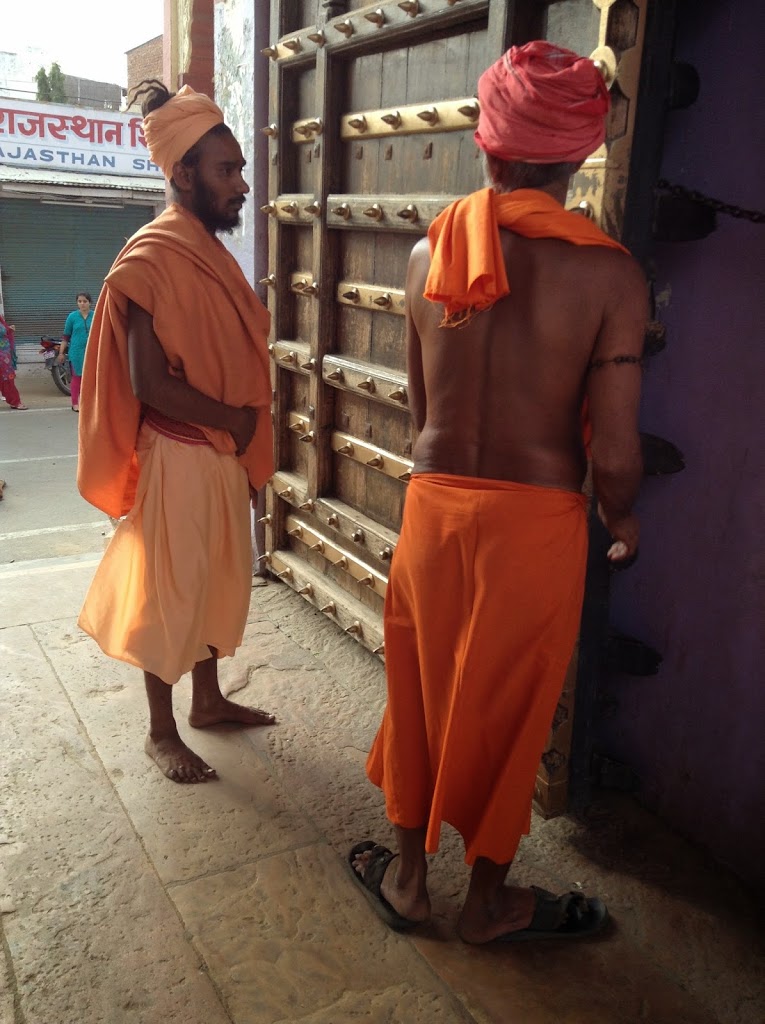 |
This is normal every day wear.
Gate keepers for the temple open the huge wooden gates at the entrance. |
 |
| The “saddhus” are holy men who renounced attachment to the material world. In India one occasional sees a saddhu walking by, but in Pushkar there is a particularly large community of saddhus. Often extremely learned, they have sharp eyes and a certain elegance about the way they carry themselves. Draped in orange and saffron tones of Indian cotton. |
 |
| The predominant color of the architecture in Pushkar is a light lilac blue which gives all the buildings a soft hue. |
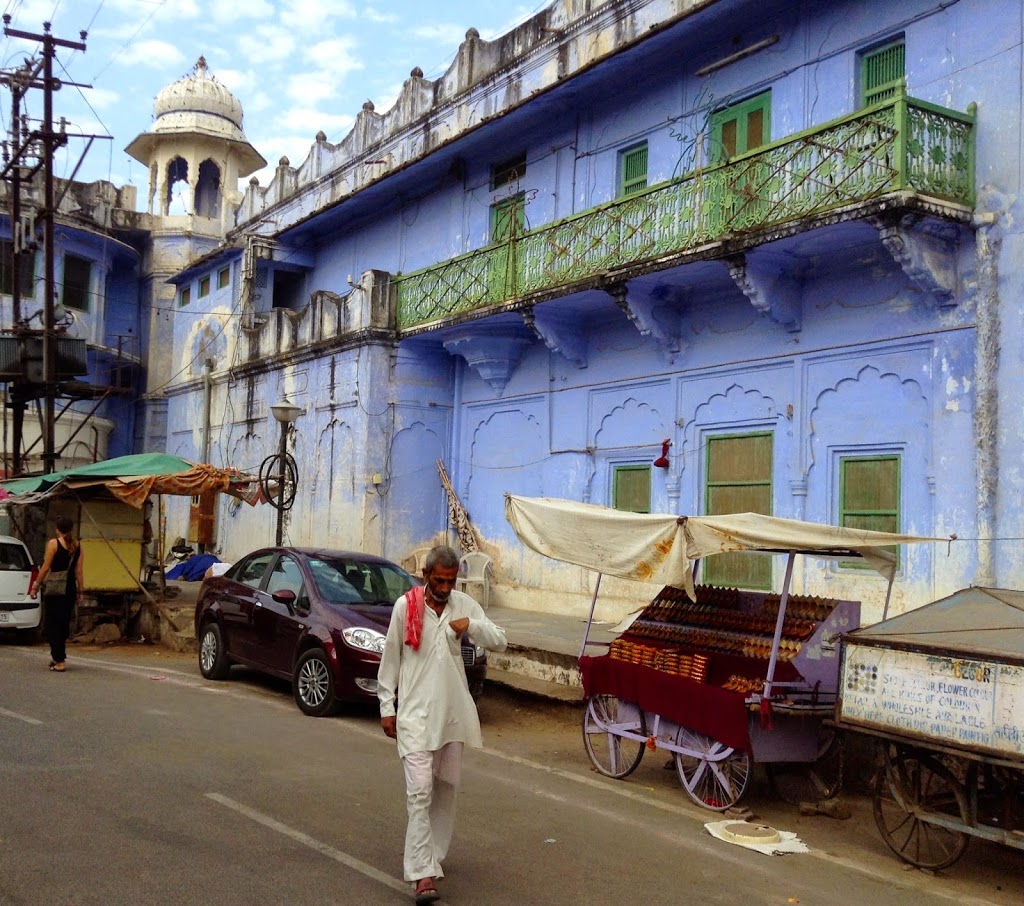 |
| Balconies, small towers, arched doorways are typical elements of the architecture in Pushkar. |
 |
| The sacred lake in Pushkar is surrounded by numerous small temples and open stone courtyards. |
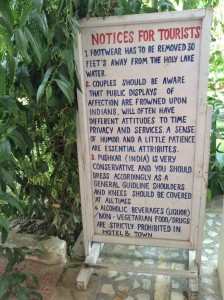 |
| Our favorite is the last set of comments: “non vegetarian food / drugs are strictly prohibited in the city”. Love the equation of non veg and drugs as equally harmful. |
The reason we come back to Rajasthan, at this particular time is the Pushkar “mela” ~ a.k.a. the annual camel fair. Think massive trading market between camel herders and nomadic groups from all over who depend on camels to support their nomadic lifestyles in the desert.
As we arrive in Pushkar, the fair has not yet started… Traders and their camels are just starting to arrive slowly as they complete their journey through the desert.
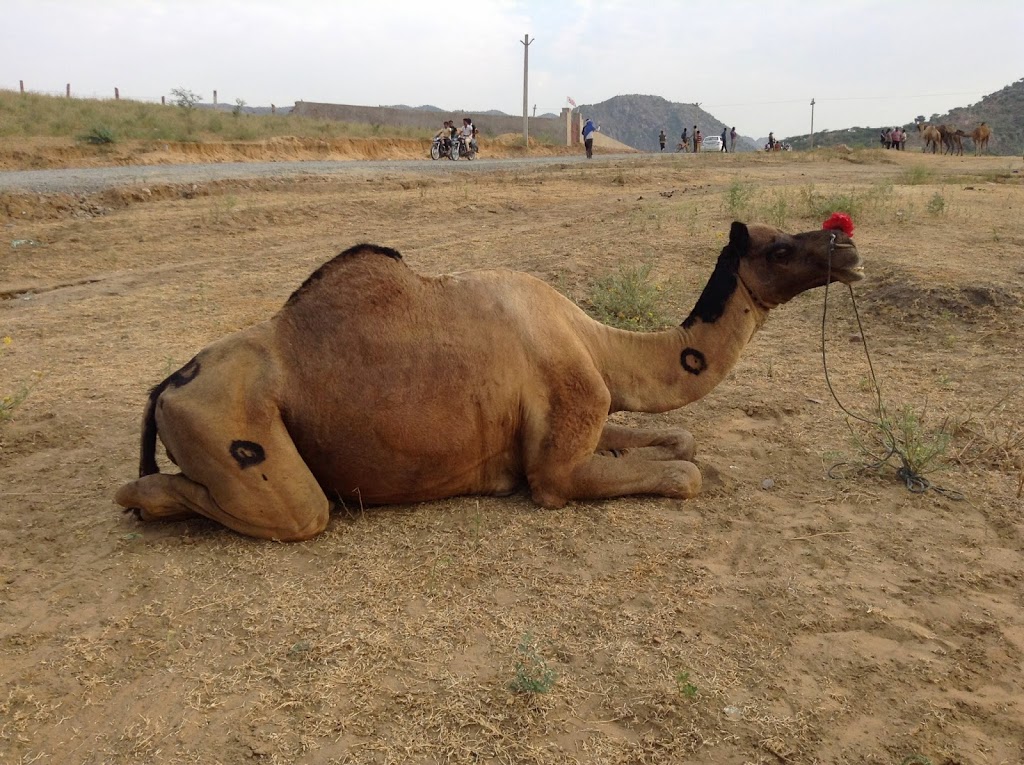 |
| The graceful hump of the camel fits in well with the soft slopes of the surrounding mountains. |
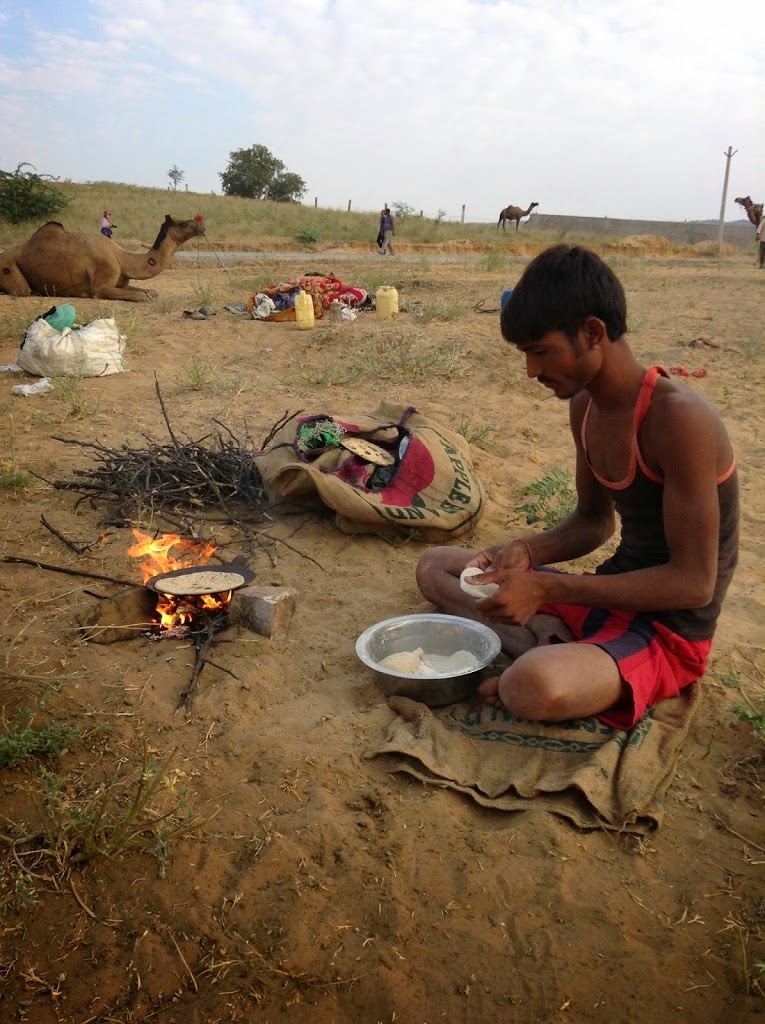 |
| A camel owner has set up camp and is preparing chapati over a fire. |
 |
| For a small city like Pushkar there are a high number of holy cows in the streets. We come across a group of them affectionately licking each other, just like cats do. |





























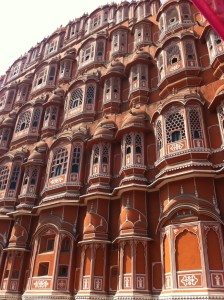



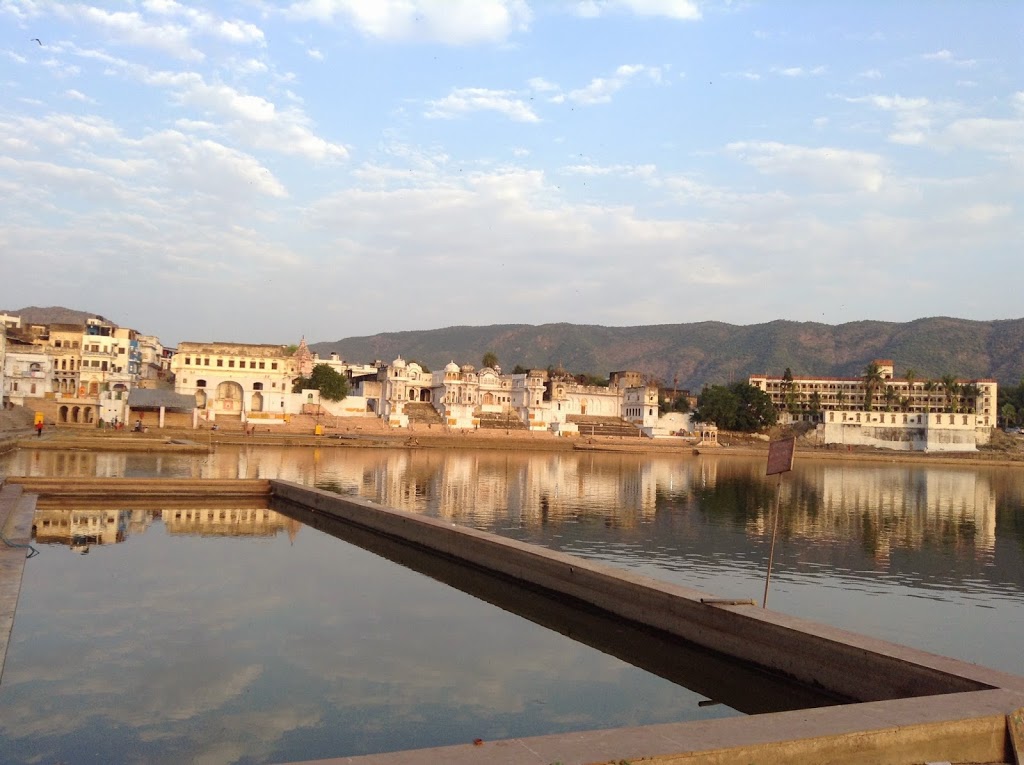
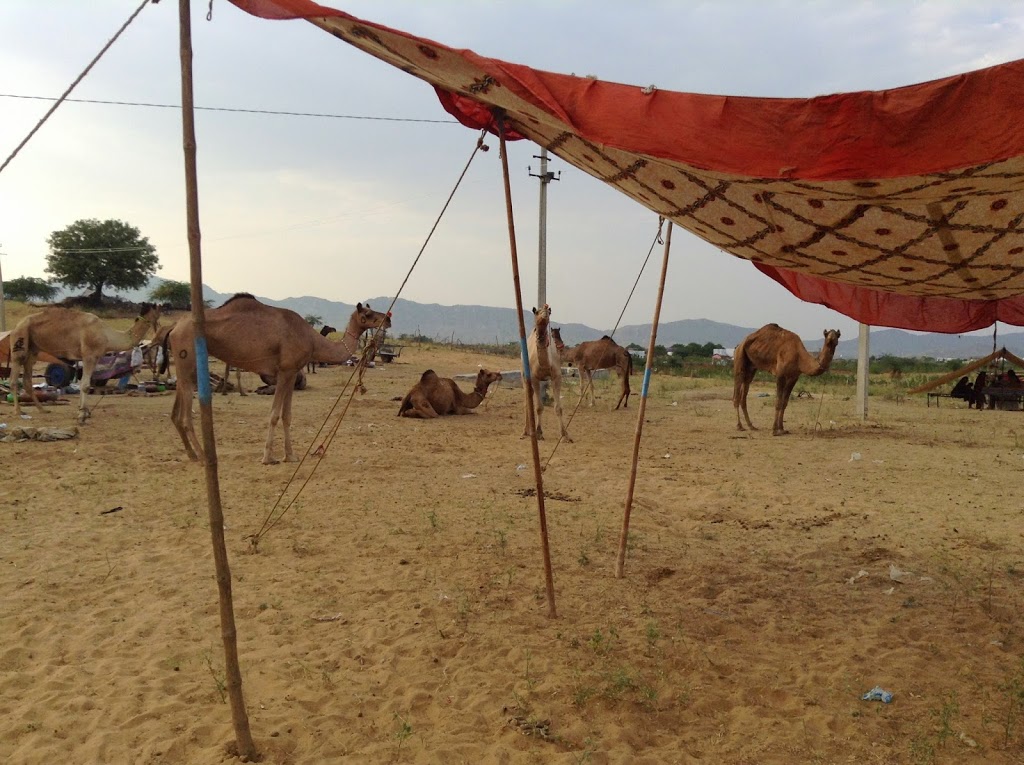
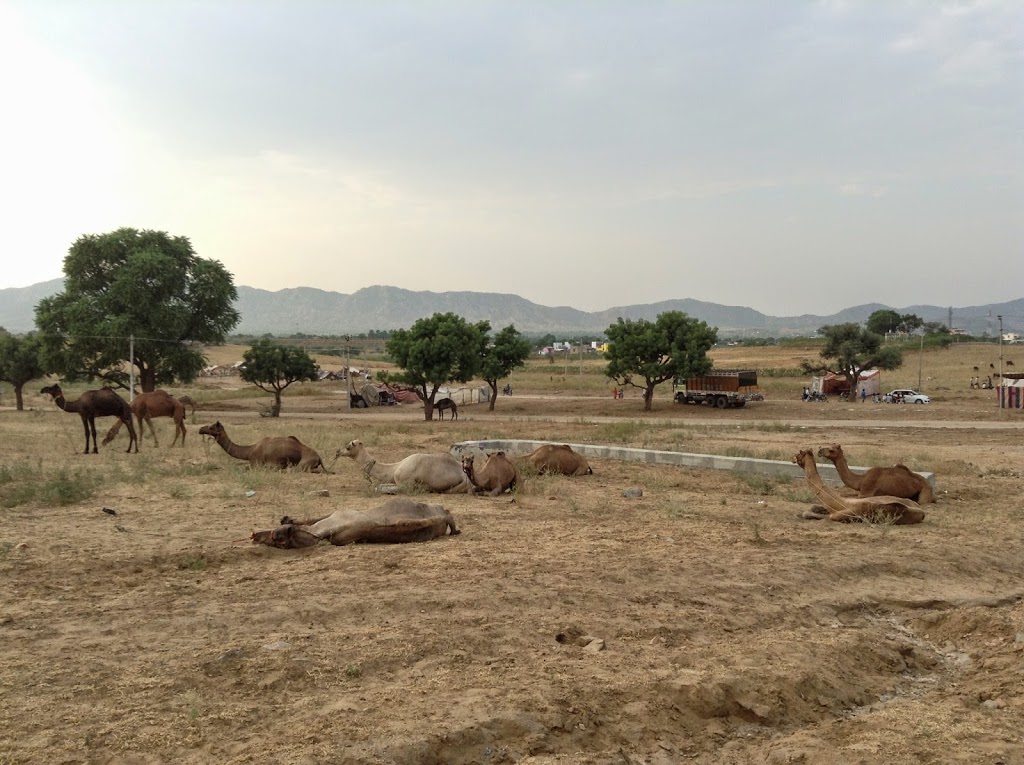
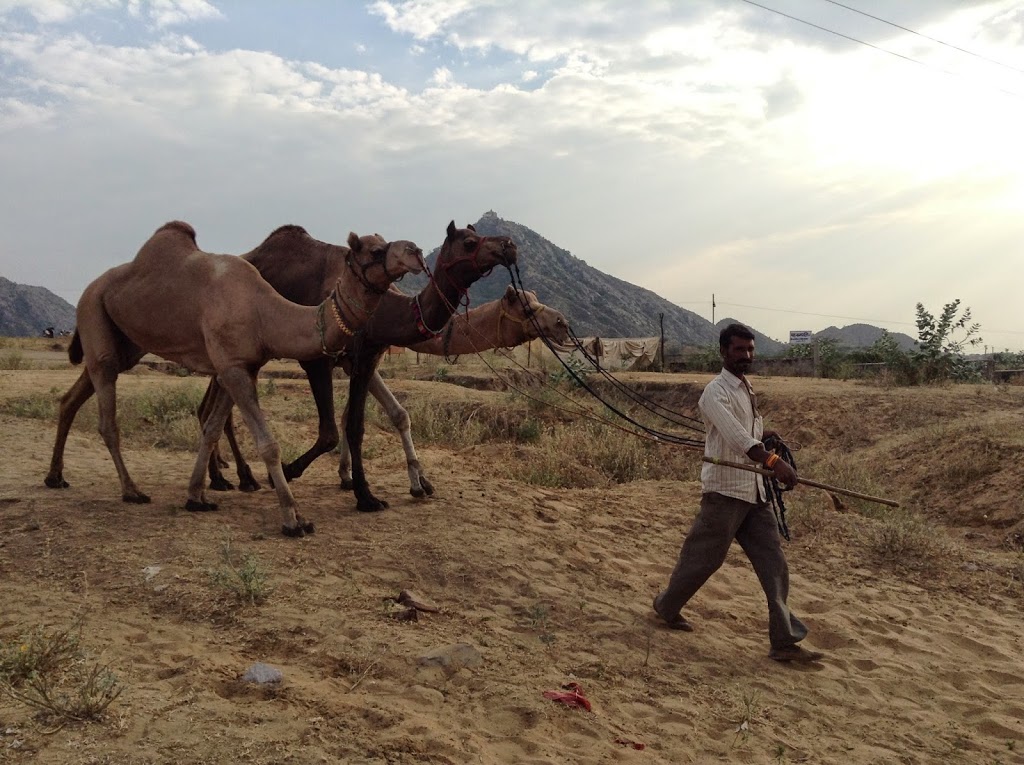
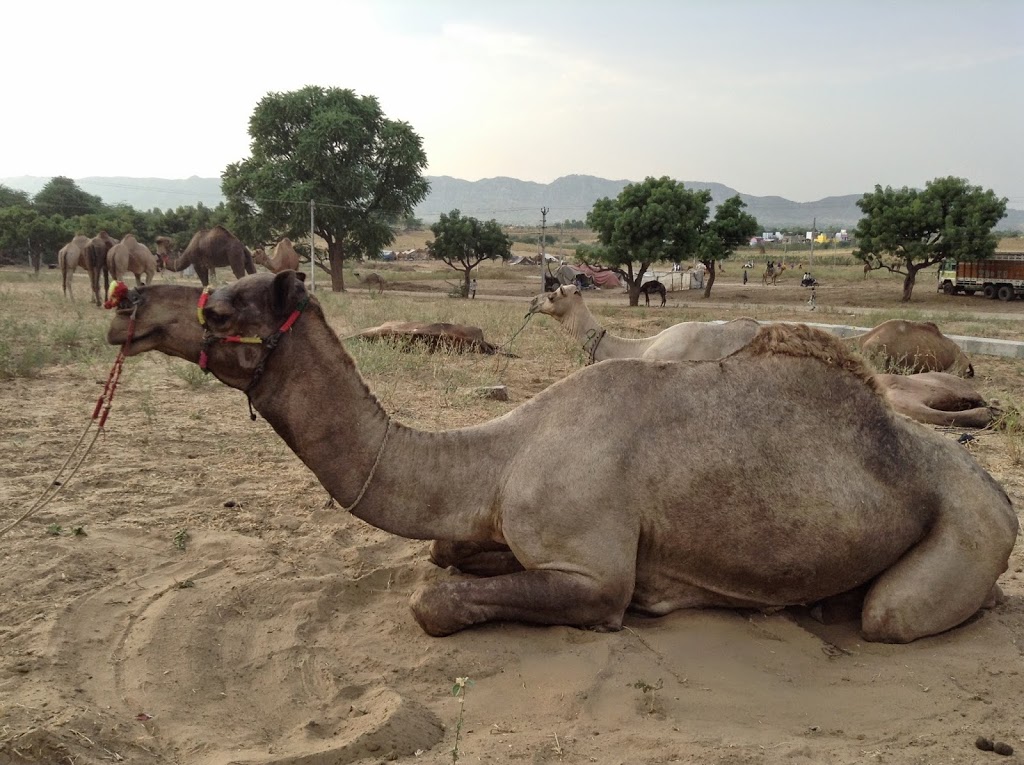

Beautiful cows.
SO beautiful and gentle. SO hungry.
Peta
Pingback: The bounty of food markets of Asia ~ India (Part 4) – Empty Nesters on a Green Global Trek